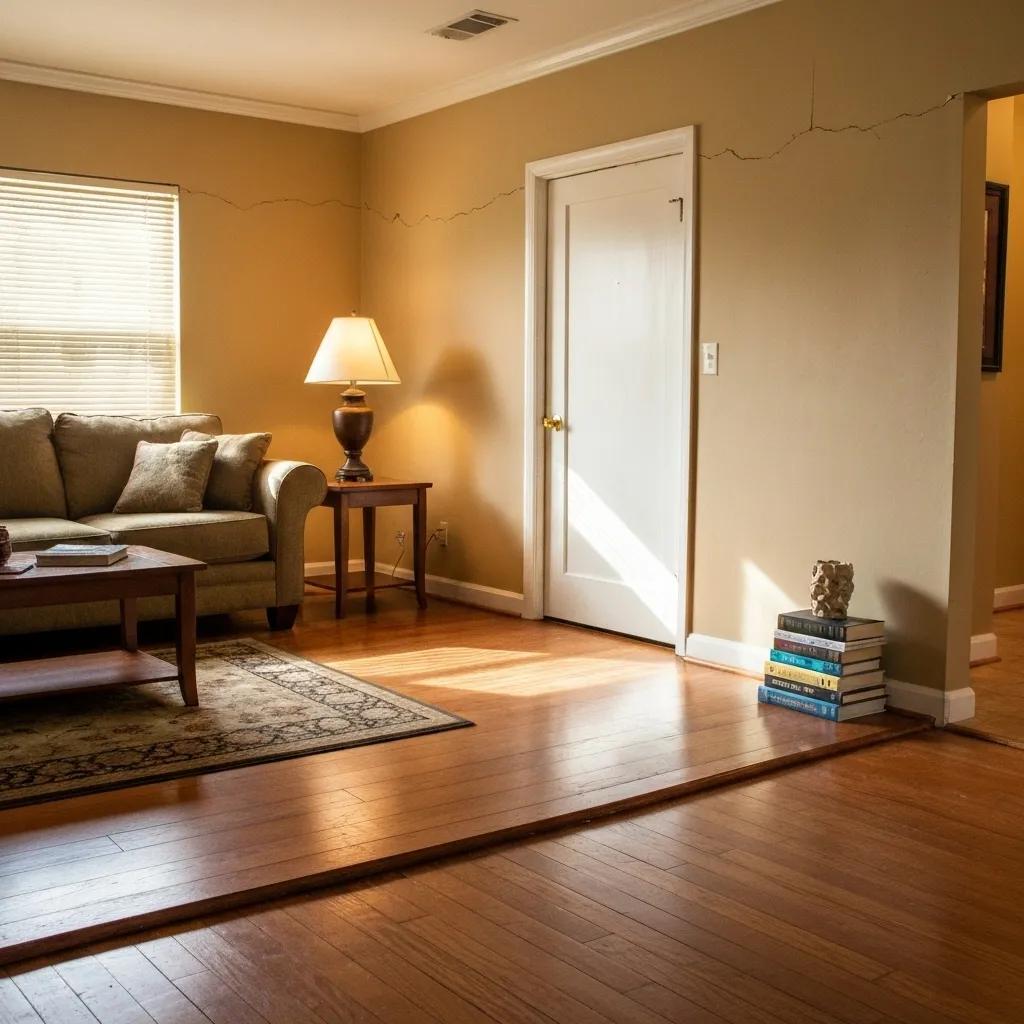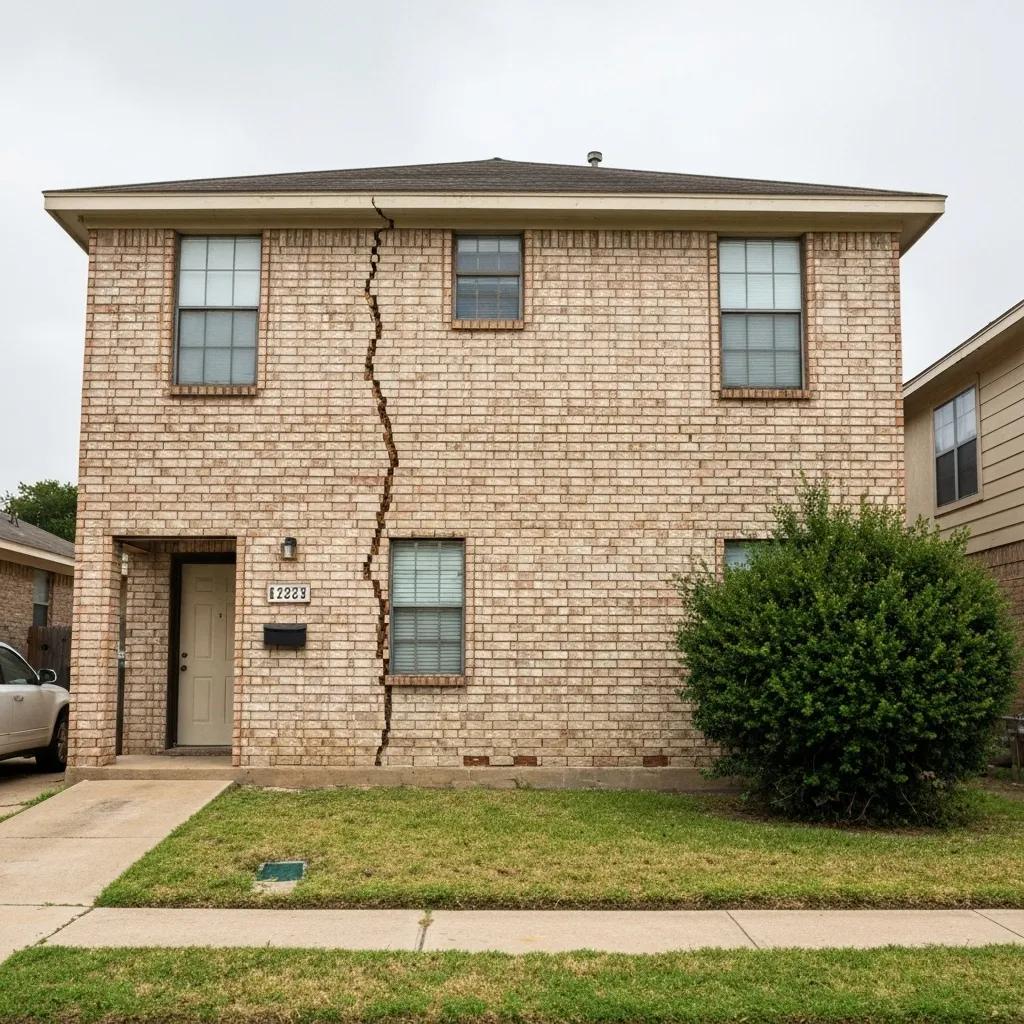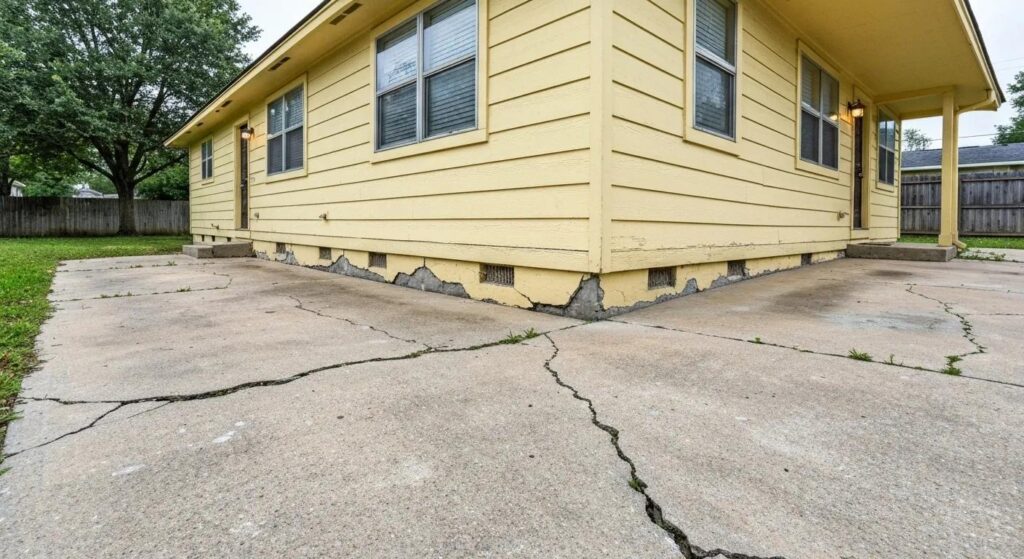Common Signs Your Houston Home Needs Foundation Repair: How to Identify Foundation Problems Early
Did you know that up to 25 percent of Houston residences exhibit early foundation distress before a structural failure occurs? Recognizing these warning signs can save homeowners thousands in repairs and prevent safety hazards. This guide reveals seven interior and exterior indicators of foundation damage, explains Houston’s unique causes, shows how to detect issues early, outlines repair solutions, offers preventative strategies, and details the risks and costs of delayed action, all while highlighting the value of professional inspections, free estimates, and lifetime warranties that local foundation repair services provide.
What Are the Most Common Interior Signs of Foundation Problems in Houston Homes?

Foundation damage often first appears inside the home as subtle but telling defects that compromise structural integrity and livability. Identifying these interior symptoms early allows homeowners to schedule a free professional inspection and secure a lifetime transferable warranty before cracks worsen. The most frequent interior indicators include drywall fissures, misaligned openings, uneven floors, and separation gaps between building elements.
How Do Cracks in Walls and Ceilings Indicate Foundation Damage?
Drywall cracks often signal that foundation settlement or heave is stressing structural framing. When concrete shifts, hairline fissures can evolve into diagonal or stair-step patterns, reflecting differential movement beneath the slab. Identifying the crack pattern and monitoring its progression helps determine severity and repair urgency.
Why Do Doors and Windows Stick or Misalign with Foundation Issues?
Doors and windows stick when frame openings warp due to foundation tilt or side-to-side movement. As the slab settles unevenly, frames become out of square, causing latches to jam and gaps to form. Early realignment checks can trigger timely pier stabilization and avoid costly frame replacements.
How Can Uneven or Sloping Floors Reveal Foundation Problems?
Sagging or sloping floors occur when one side of a slab or beam foundation settles more than the other. Floorboards may feel bouncy or dip toward a low point, and baseboards may separate from the edges of the floors. Measuring slope with a level or straightedge offers homeowners a quick diagnostic for settlement.
What Do Gaps Between Walls, Ceilings, and Floors Tell You About Foundation Health?
Separation gaps appear where walls meet ceilings or floors when the structure shifts independently of the framing. These triangular voids often widen with seasonal moisture swings in Houston’s clay ground. Tracking gap growth provides a clear metric for movement over time and supports decisions about concrete pier installation.
What Exterior Signs Should Houston Homeowners Watch for Foundation Damage?

Exterior symptoms provide visible evidence of underlying foundation distress and often correlate with interior defects. Early detection outside the home through brickwork cracks, tilting chimneys, and misaligned openings can prompt preventive drainage improvements and pier stabilization under free inspection offers.
How to Identify Stair-Step and Horizontal Cracks in Brickwork and Mortar?
Stair-step cracks follow the mortar joint pattern in brick veneer, indicating lateral shear forces from ground movement. Horizontal breaks appear where hydrostatic pressure pushes against foundation walls. Documenting crack width and orientation helps structural specialists plan appropriate foundation instability or underpinning.
What Does a Tilting Chimney or Bowing Wall Indicate About Your Foundation?
A chimney that leans away from the roofline or walls that bulge inward reflects differential soil movement and footings losing support. These signs reveal that lateral earth pressure and uneven load distribution are stressing masonry elements. Addressing soil drainage and installing push piers can restore vertical alignment.
Why Are Gaps Around Exterior Doors and Windows a Warning Sign?
Gaps around exterior frames occur when the foundation shifts, compromising weatherproof seals and allowing moisture and pests inside. These openings highlight where slab movement has pulled framing away from brick or stucco. Installing proper gutter drainage and root barriers can mitigate further shifting before repair. Root barriers
What Are the Primary Causes of Foundation Damage in Houston Homes?
Houston’s foundation challenges stem from a combination of expansive clay soil, plumbing leaks, poor drainage, and invasive tree roots. Each factor impacts soil stability and exerts forces on the structure, making understanding these causes essential for durable repair and prevention.
Before reviewing specific causes, the table below summarizes how each condition undermines foundation performance:
| Cause | Key Mechanism | Impact |
|---|---|---|
| Expansive Clay Soil | Swells when wet, contracts when dry | Heave, settlement, cracks |
| Plumbing and Slab Leaks | Soil erosion under slab from leaks | Voids beneath foundation, uneven floors |
| Poor Drainage | Water pooling near footings and walls | Soil softening, increased lateral load |
| Tree Roots | Moisture absorption and lateral pressure | Localized heave, crack initiation |
Lessons Learned from Distress of Foundations on Expansive Clays in the Active Zone
Research on foundation distress in Houston and Dallas highlights that expansive clay soils, particularly those with high swell potential, are a primary cause of structural issues. These clays absorb water and expand, exerting significant uplift pressure on foundations, and then shrink when dry, leading to differential movement, cracks in drywall, and sticking doors. Poor design and construction practices, such as inadequate soil borings and improper placement of floor slabs on expansive clays, can exacerbate these issues.
This academic paper directly supports the article’s claims about Houston’s expansive clay soil as a primary cause of foundation problems, detailing the mechanisms of soil movement and its impact on structural integrity.
How Can Houston Homeowners Detect Foundation Problems Early?
Early detection relies on routine visual inspections, simple tools, and professional guidance to differentiate normal settling from structural distress. Spotting the first signs can trigger an annual free inspection and tailored maintenance plan that leverages lifetime warranties to secure peace of mind.
What Are the First Signs of Foundation Problems to Look For?
Interior drywall fissures, persistent sticking in doors, and small brick cracks on exterior walls typically appear before severe damage. A slight slope in the floors or a narrow separation at wall corners can also signal underlying movement. Regular walk-throughs and photographs of vulnerable areas provide comparative records for trend analysis.
How Often Should You Schedule a Professional Foundation Inspection in Houston?
Houston homeowners should arrange a professional foundation inspection at least once a year, with additional evaluations following heavy rains or seasonal droughts. Annual assessments help detect subtle shifts early, allowing technicians to propose corrective actions such as pier adjustments or drainage upgrades under warranty coverage.
What Tools or Checklists Can Help Diagnose Foundation Issues at Home?
Homeowners can use simple instruments and checklists to spot early signs:
- A level and straightedge identify sloping surfaces.
- A tape measure tracks crack widths.
- A digital camera documents changes over time.
Homeowners can follow a simple checklist that covers interior walls, exterior veneer, door/window operation, and yard grading to flag areas for repair expert review.
What Foundation Repair Options Are Available for Houston Homes?
Our white label link building services are the best option for agencies looking for quality, scalability, and convenience. We create SEO optimized, fresh content that performs well in search rankings and boosts your clients’ site authority. All of our backlinks come from authoritative publishers. We’ll secure the quantity you need and in the right time frame.
| Repair Method | Description | Typical Benefit |
|---|---|---|
| Concrete Piers | Piers are driven to a “point of refusal.” | Immediate load transfer below expansive clay |
| Push Piers | Driven concrete pipes that bear on firm soil | Lifts settled foundation sections uniformly |
| Pile Guard Pier | Polymer Joint guards connect piers to a point of refusal. | Providing long term stability |
| Slab Leveling | Re-raises settled slab sections via grout pumping | Restores level surfaces without major excavation |
| Wall Bracing | Steel supports installed inside basement walls | Prevents inward bowing and cracks from widening |
What Preventive Measures Can Houston Homeowners Take to Avoid Foundation Problems?
- Maintain consistent soil moisture by using drip irrigation away from the foundation to prevent rapid dirt shrink-swell cycles.
- Install or repair gutters and downspouts to channel rainwater at least 5 feet from the foundation perimeter.
- Apply root barriers at least 3 feet deep around large trees to limit lateral pressure and moisture imbalance.
These preventative steps create a more uniform moisture distribution around footings and reduce expansive clay movement, which supports long-term structural stability.
What Are the Risks and Costs of Ignoring Early Foundation Damage Signs in Houston?
Delaying repair allows minor symptoms to evolve into severe structural, plumbing, and safety hazards, greatly increasing total costs and disrupting home life. Addressing small cracks and misalignments promptly preserves property value and prevents secondary damage.
How Does Delayed Repair Increase Structural and Plumbing Damage?
Unchecked foundation movement propagates cracks in load-bearing elements and stresses plumbing pipes beneath the slab. Over time, leaking sewer or water lines can erode the ground, creating larger voids and requiring extensive excavation and repiping.
What Is the Average Cost Range for Foundation Repair in Houston?
Repair expenses vary by method and scope, typically ranging from $3,500 for minor slab leveling to $10,000+ for extensive pier installation. Under slab leak repair and comprehensive drainage upgrades may add $1,000–$3,000, but early intervention often minimizes overall investment.
Is Foundation Repair Covered by Home Insurance in Houston?
Standard homeowners policies generally exclude damage from soil movement, natural settling, or poor drainage. However, coverage may apply if the damage results from a sudden, accidental event like a burst plumbing pipe or other covered perils. Reviewing your policy and securing a transferable warranty from a foundation specialist ensures maximum financial protection and peace of mind.
How Much Does Foundation Repair Cost in Texas? (2025 Data) & Will Homeowners Insurance Cover Texas Foundation Repair?
Foundation repair costs in Houston typically range from $3,300 to $7,000 for most residential jobs, with minor repairs potentially costing as little as $300-$800 and major structural overhauls reaching $15,000-$30,000 or more. Standard homeowners’ insurance policies in Texas generally do not cover foundation damage caused by soil movement, natural settling, or poor drainage. However, coverage may apply if the damage results from a sudden, accidental event like a burst plumbing pipe or other covered perils.
This information verifies the article’s statements regarding the average cost range for foundation repair in Houston and clarifies the typical limitations and potential coverages of homeowners’ insurance policies in Texas.
Overlooking early foundation distress can lead to escalating repair costs, safety concerns, and diminished home equity. Houston homeowners who monitor interior cracks, exterior fissures, and sloping floors can secure free professional inspections and leverage advanced repair techniques such as concrete piers or pile guard pier to restore stability. Combining timely interventions with preventative drainage and landscaping practices maintains structural integrity in Houston’s expansive clay soils. Act now to protect your investment and ensure a safe, durable foundation for years to come.


